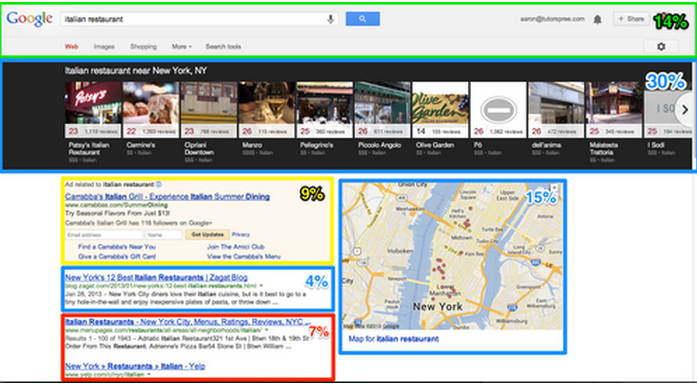It’s a well-known fact that domains on Page 1 of search engine results pages get the majority of web traffic and clicks. Brafton recently reported that clicks on top domains might be higher than marketers think – 95 percent of all users default to web content listed on the first page, and around one-third of all clicks go to the very first listing. However, new data suggests SERPs might contain fewer organic listings than expected, which puts companies in even greater competition for those prime real estate spots.
An investigation conducted for the Tutorspree Blog revealed that organic listings make up only 13 percent of Google SERPs for certain queries such as “auto mechanic.” Think Google’s pulling a fast one on SEOs? Think again.
A SERP audit shows this proportion is common for internet queries, with 12 percent of the page going toward AdWords results at the top of the page. Meanwhile, 7 percent of search real estate is dedicated to a map for local listings and another 17 percent to paid search ads to the right of organic listings.

This breakdown might shed light onto Google’s recent introduction of the Local Search Results Carousel, the study reports. Unlike traditional SERPs, the pages display a sliding display that features numerous local listings for bars and restaurants. The carousel takes up about 30 percent of the page and gives real estate back to relevant domains.
Because most marketers have aspirations to drive organic search traffic back to their sites by ranking on Page 1 for select key terms, regular SERP updates force brands to develop smarter SEO campaigns.
they will need to work harder to earn places in those small areas of SERPs. In addition to SEO best practices, webmasters must also consider whether they’re giving site visitors the kind of experiences worth visiting and make changes accordingly.




